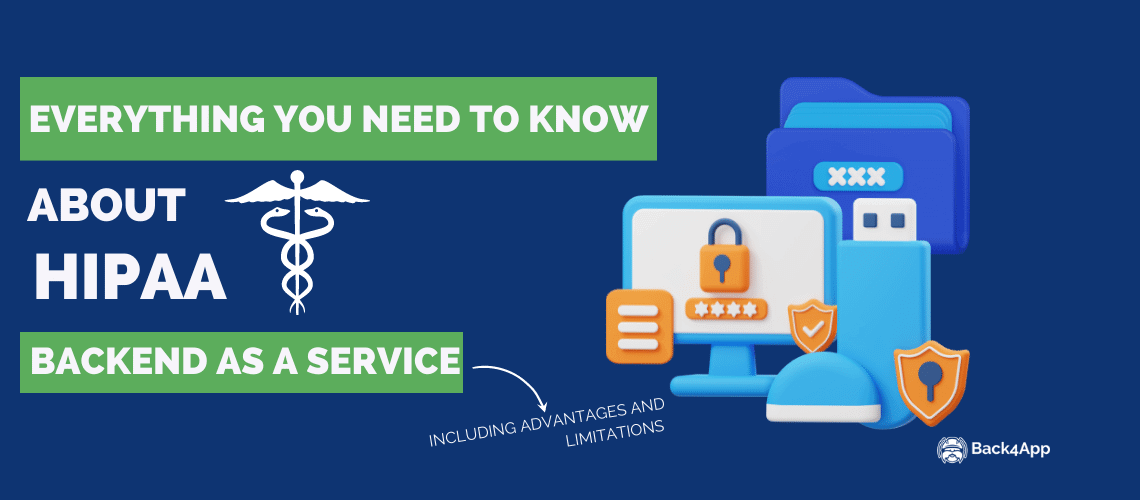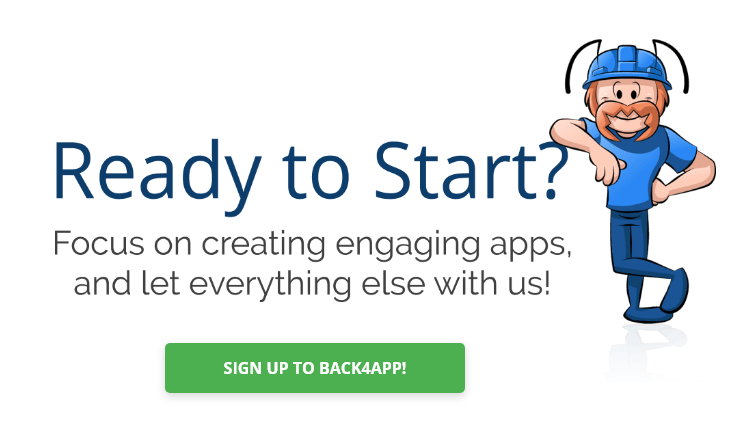HIPAA Backend as a Service

Are you searching for a HIPAA-compliant backend as a service? Here is a detailed guide explaining the advantages and limitations of using a backend as a service to process PHI data.
This article will briefly explain HIPAA, its requirements, covered entities, and the required legal agreements with cloud providers.
Further, it will explore the benefits and limitations of using a BaaS – Backend as a Service solution to host and process protected health information.
Contents
HIPAA Overview
The Bill Clinton administration initially introduced the HIPAA act in 1996. The acronym HIPAA means Health Insurance Portability and Accountability Act, a United States federal law defining the standards and safeguards to protect patient health information.
What are covered entities?
Covered entities are the organizations that must comply with the HIPAA rules to protect the privacy of PHI data. There are three types of covered entities detailed below:
| Covered Entity | Examples |
| Health care provider | Clinics, Doctors, Dentists, Pharmacies, etc |
| Health plans | Health insurance companies, government programs like Medicare, HMOs, etc |
| Health care clearing houses | It is a third-party that analyzes claim data between provider systems and insurance payers |
What type of data does HIPAA requirements protect?
Generally speaking, the HIPAA protects all sensitive patient data, including name, birth date, social security number, exams, etc.
Is a cloud provider a covered entity?
Cloud providers are NOT Covered Entities but business associates under the HIPAA act. Below is the definition of a Business Associate according to the 45 CFR § 160.103.

Based on the definition above, HIPAA will treat a cloud provider as a subcontractor that receives, transmits, and maintain PHI data.
What is a BAA – Business Associate Agreement?
A BAA is a legal agreement between a Covered Entity and a Business Associate detailing the access to PHI data, safeguards, the process to destroy data, and provisions for terminating the contract.
Backend as a Service Overview
Backend as a Service or BaaS is a cloud service that helps developers and organizations to automate backend development via out-of-the-box building blocks and manages the server infrastructure.
The benefits of using a backend as a service platform rely on a faster development process, a more productive development team, and reduced engineering costs. The limitations relate to a less flexible coding environment and no server-level access.
What are the core features of backend as a service?
The most important features of a backend as a service are a ready-to-use data model, APIs, serverless functions, and storage.
Are the backend as a service providers HIPAA certified?
There is no HIPAA certification for cloud computing providers like backend as a service platforms. Covered Entities and cloud providers will work under a shared responsibility model.
For instance, the cloud providers will be responsible for protecting the infrastructure like hardware, networking, storage, etc.
Examples of customers’ responsibilities are appropriate security policies, system access procedures, audit logging processes, etc.
What are the advantages of using a backend as a service to develop a HIPAA-compliant application?
HIPAA requirements are complex, implementation will require much engineering effort, and it’s hard to execute.
For example, app developers can benefit from using a mobile backend to host HIPAA regulated health data, from encrypting data at rest and in transit, backup routines, firewalls, and disaster recovery procedures.
A BaaS or mBaaS platforms will work on web and mobile apps and are suitable for both implementations. Outsourcing HIPAA backend execution to a BaaS provider saves time and costs and avoids the hassles of implementing each step directly on an infrastructure provider.
Looking for a HIPAA-compliant backend as a service?
Back4App is an excellent option for developing hospital applications, patient portals, general healthcare apps, etc.
The company rely the infrastructure on AWS and implement the following safeguards to protect PHI data:
- Fully redundant architecture for production applications processing PHI data;
- US-based data centers;
- Data in-transit encryption;
- Data at rest encryption;
- Multi-region backups;
- Disaster recovery;
- Etc.
To know more, please schedule a conference call using this calendar link or email us at [email protected].
Conclusion
This article provided an overview of HIPAA, core security and compliance requirements, definitions, and examples of data that must be protected.
It also illustrated the type of contract required between a covered entity and a cloud provider, the responsibility model between the parties, and the advantages of using a BaaS for HIPAA implementation.
Lastly, it showed examples of the safeguards implemented at Back4App for HIPAA-related apps.

What is HIPAA?
The acronym HIPAA means Health Insurance Portability and Accountability Act, a US federal law defining the standards and safeguards to protect patient health information.
HIPAA requirements are complex, and the implementation will require much engineering effort. Outsourcing this execution to a BaaS provider saves time and costs and avoids the hassles of implementing each step directly on an infrastructure provider.
Which is an example of backend as a service provider that supports HIPAA?
Back4App is an excellent option for developing hospital applications, patient portals, general healthcare apps, etc.



